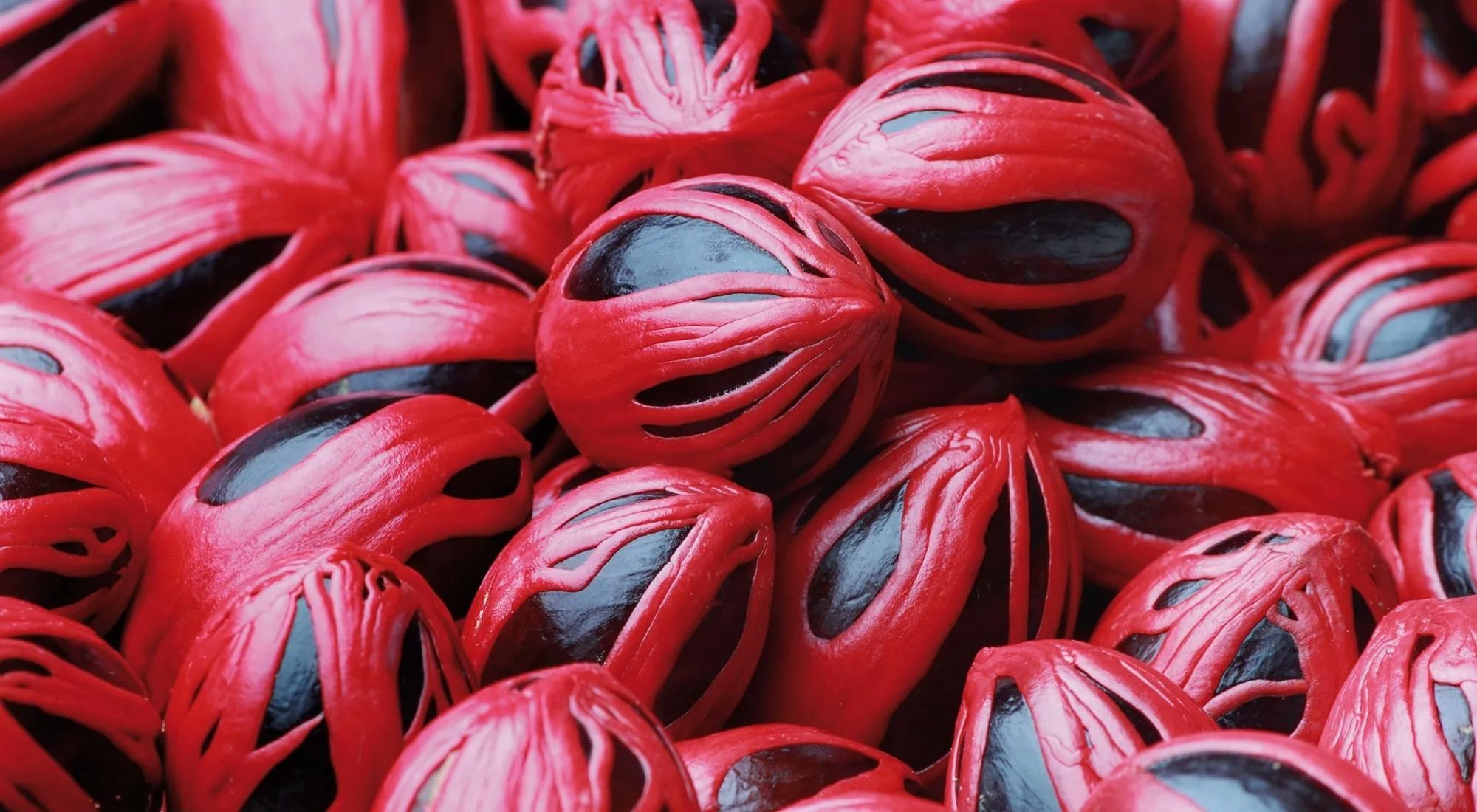What do a doughnut, a prison inmate, and a bottle of ketchup have in common? Though this could easily be the beginning of a bad joke, it also serves as a summary of sorts for this section of the volume, where papers from A. T. Shulgin, T. Sargent, and C. Naranjo; A. T. Weil; and E. B. Truitt explore a surprising psychoactive substance. The answer here is nutmeg, a spice made from the fruiting body of Myristica fragrans, a tree from the Myristicaceae family native to the East Indian Islands. Though the genus Myristica contains around 100 species, only M. fragrans has shown to be economically viable for cultivation. The fruits of these trees somewhat resemble apricots, with the flesh splitting open to reveal the seed. It is this seed that is the source of nutmeg, while the red seed coat is separated and used to make the similar spice, mace. Due to its need for hot and humid climates, nutmeg cultivation takes place in the tropics, with Malaysia and the Caribbean being especially noteworthy locations for production.
In addition to their many culinary uses, mace and nutmeg are also employed in perfumes and soaps, and nutmeg was formerly sold as a butter that was applied topically to manage rheumatism and sprained joints. Perhaps nutmeg's largest 'medicinal' use, however, was when women in Britain and America at the end of the 1800s began to believe that it worked as an abortifacient, a trend that Weil touches on in his article. Unfortunately, this widespread belief was actually erroneous, and rather than having the desired effect, it instead led to many women being hospitalised after consuming too much of this substance.

Not only is nutmeg toxic in large quantities, but also psychoactive. The prevailing theory at the time, and one that has lasted to today, is that the psychoactivity of nutmeg is due to myristicin, a volatile oil with a chemical formula similar to that of mescaline. Nutmeg holds a unique place among psychoactives in that it is incredibly well known around the world as a spice, while its psychoactive properties are largely secret. At the time of this volume's original release, the authors note that those who knew of the psychoactive properties of nutmeg associated it with three narratives: that it was used as an intoxicant in Asia, that it was widely used in the American prison system by inmates, and that students and beatniks were employing it for a cheap high. As the authors report, the latter two stories turned out to be true to an extent. Largely though, the undesirable side effects, such as anxiety, tachycardia, dry mouth, hypothermia, constriction of the blood vessels, changes in the pupils, and heaviness of the limbs, kept most inmates and beatniks from attempting to use nutmeg for its psychoactive properties.
Sadly, the section offers little in the way of examples of traditional uses of nutmeg. Such a discussion would serve to contextualise the history of the plant in a very fitting manner. Most of the papers are also written in a way that is fairly inaccessible to the general reader. This section will be of most use to chemists or those with a strong chemistry background. Though this is unfortunate, the information is detailed and pertinent, thus allowing this section to be of great use to the right audience. Those with less interest in chemistry would do well to skip or skim the discussion section at the end as well as the Truitt article. That being said, the description of the extraction methods for volatile oils is very detailed and thus of use to those interested in carrying out research or experiments in this field.

This section also leaves us wondering whether or not we should be concerned about the nutmeg many of us ingest in Christmas cookies or Indian curries. The answer, thankfully, is no. In the small quantities that we consume, nutmeg is not dangerous. The difference between a poison and a medicine is often dose; unless you are trying to get high on nutmeg, you have nothing to worry about and can go ahead and enjoy the unique flavour of this spice without concern.
The authors of this section were certainly concerned about whether talking about and researching the psychoactive effects of nutmeg would cause it to become more popular as a drug of abuse. With its dangerous side effects in the doses needed to achieve psychoactive effects, this concern seems quite legitimate. Now 50 years into the future, however, we can see that the answer appears to be 'no.' Despite advances in research on the topic, nutmeg is still a fringe drug that is not often employed and whose psychoactive effects remain largely unknown. Whether things will continue this way or whether the authors' concerns will yet come to be a reality, however, remains to be seen, and may yet provide an interesting study after another 50 years.

